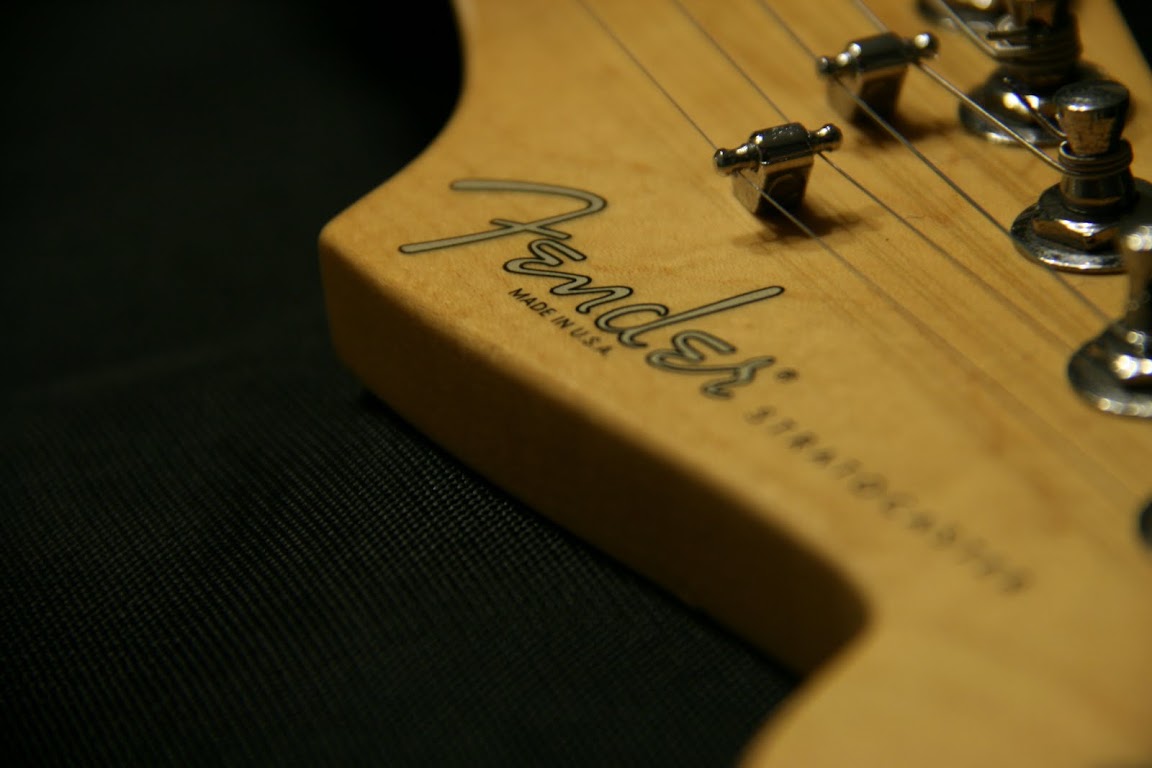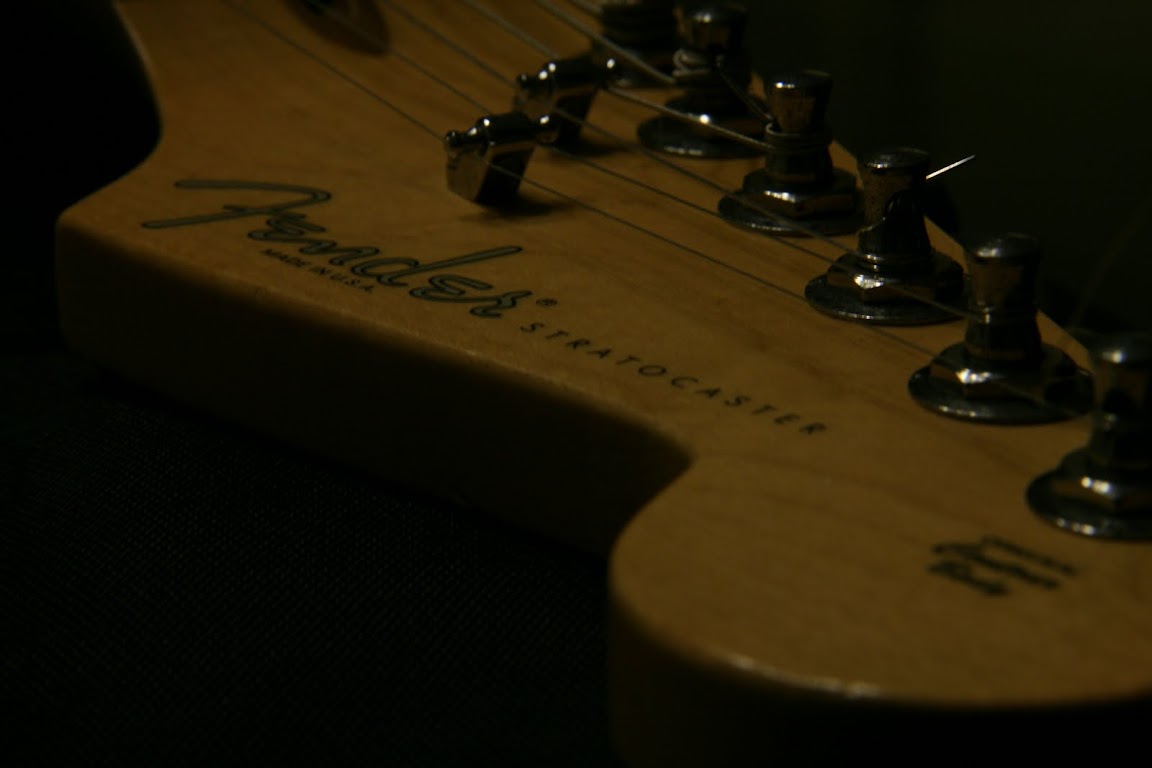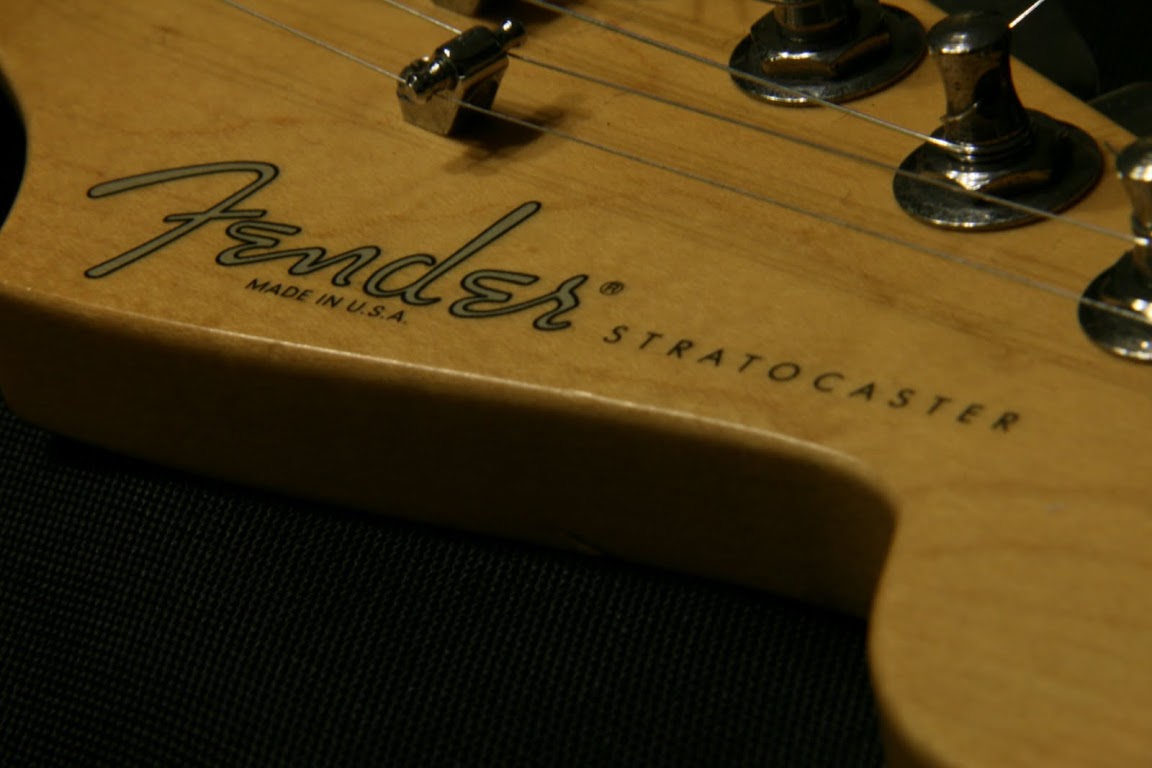I thought I would start up a post to share my experience in the new to me SLR world, maybe run some questions by the pro's and share my learning experience with you. I've been reading A LOT about SLR photography, reading about exposure time, aperture, metering, etc...
My gear:
Camera: Canon 400D (thanks Anthony!)
Lens(es): Canon EFS 18-135mm f 3.5-5.6 IS
So I played around for about an hour last night taking various pictures around the house and have a few questions.
My goal in this series was to capture the writing on the guitar, in focus, super close up.
For the picture below, metadata shows ISO: 400 Exposure: 1/15 sec Aperture: 5.6 Focal Length: 135mm
Most of Fender is focused but towards the R and the Stratocaster is all blurry, dammit.

I then tried a higher F-stop number as pictured below, camera in AV mode I think, ISO: 400 Exposure: 1/6 sec Aperture: 16.0 Focal Length: 135mm
With this one it is all in focus but because of the higher Aperature I guess I didn't increase the Exposure enough to capture more light, right?

Here is the same aperature but with longer exposure, ISO: 400 Exposure: 1/3 sec Aperture: 16.0 Focal Length: 120mm
This last one everything is in focus as I wanted but the color absolutely sucks. Would a longer exposure help? Higher ISO?

I probably took 40 shots trying to figure how to do this, but sort of got it what I was looking for. Am I correct stating in a low light situation a higher ISO increases the brightness of a shot requiring a lower exposure? If so how do you know when a longer exposure is necessary versus a higher ISO? I've (think) read the higher the ISO the more grainy the shot will be in low light situations?
The higher the f-stop number the greater the DOF? Meaning if the F-Stop is like 16 or so, things in the background will be in focus as well as your main subject. Compared to an F-Stop of like 3 where only the thing you are focusing on is in focus and everything else is blurred?
And one more question my SLR buddy couldn't answer.
The lens I got says f3.5-5.6
So do the numbers on the lens mean that at a minimum (or maximum in aperture speak) the camera lens will do f3.5? And on the flip side of that 5.6max?
If so, what does changing the f value on the camera actually do if the lens is incapable of opening that much or that little?
The camera allows you to choose both larger and smaller f value's, right? So what exactly is going on when I choose something like f16?
Thanks and my apologies for butchering the practice...
Feel free to tell me to shut up and keep shooting, all comments welcomed.
My gear:
Camera: Canon 400D (thanks Anthony!)
Lens(es): Canon EFS 18-135mm f 3.5-5.6 IS
So I played around for about an hour last night taking various pictures around the house and have a few questions.
My goal in this series was to capture the writing on the guitar, in focus, super close up.
For the picture below, metadata shows ISO: 400 Exposure: 1/15 sec Aperture: 5.6 Focal Length: 135mm
Most of Fender is focused but towards the R and the Stratocaster is all blurry, dammit.
I then tried a higher F-stop number as pictured below, camera in AV mode I think, ISO: 400 Exposure: 1/6 sec Aperture: 16.0 Focal Length: 135mm
With this one it is all in focus but because of the higher Aperature I guess I didn't increase the Exposure enough to capture more light, right?
Here is the same aperature but with longer exposure, ISO: 400 Exposure: 1/3 sec Aperture: 16.0 Focal Length: 120mm
This last one everything is in focus as I wanted but the color absolutely sucks. Would a longer exposure help? Higher ISO?
I probably took 40 shots trying to figure how to do this, but sort of got it what I was looking for. Am I correct stating in a low light situation a higher ISO increases the brightness of a shot requiring a lower exposure? If so how do you know when a longer exposure is necessary versus a higher ISO? I've (think) read the higher the ISO the more grainy the shot will be in low light situations?
The higher the f-stop number the greater the DOF? Meaning if the F-Stop is like 16 or so, things in the background will be in focus as well as your main subject. Compared to an F-Stop of like 3 where only the thing you are focusing on is in focus and everything else is blurred?
And one more question my SLR buddy couldn't answer.
The lens I got says f3.5-5.6
So do the numbers on the lens mean that at a minimum (or maximum in aperture speak) the camera lens will do f3.5? And on the flip side of that 5.6max?
If so, what does changing the f value on the camera actually do if the lens is incapable of opening that much or that little?
The camera allows you to choose both larger and smaller f value's, right? So what exactly is going on when I choose something like f16?
Thanks and my apologies for butchering the practice...
Feel free to tell me to shut up and keep shooting, all comments welcomed.





